Strap in, webmasters! ? If your site’s bounce rate has been skyrocketing, it’s high time to bring it down to earth. We’re here to unveil nine actionable tips that can slash your bounce rate and foster increased user engagement on your website.
Let’s delve into it:
- Spruce up your site speed — slow loading pages send visitors away like a repellent,
- Crystal-clear navigation — let users explore your website with ease,
- High-quality content — deliver engaging information tailored for your audience,
- Mobile-friendly design — because half of your visitors might be on mobile,
- Straightforward CTAs — let users know exactly what action they should take.
From e-commerce to blogging, these techniques cut across various niches, ensuring your website stays sticky like honey ?, and your visitors don’t bounce back as though on a trampoline.
Now, imagine a tool that helps you improve all the above while monitoring user experience. Say hello to Plerdy! A powerful CRO & UX tool that offers indispensable insights to help enhance your site’s performance. Remember, there’s no silver bullet to reducing bounce rate — but armed with these tips and Plerdy, you’re well on your path to success. Let’s make that bounce rate tumble! ?
What is a Bounce Rate?
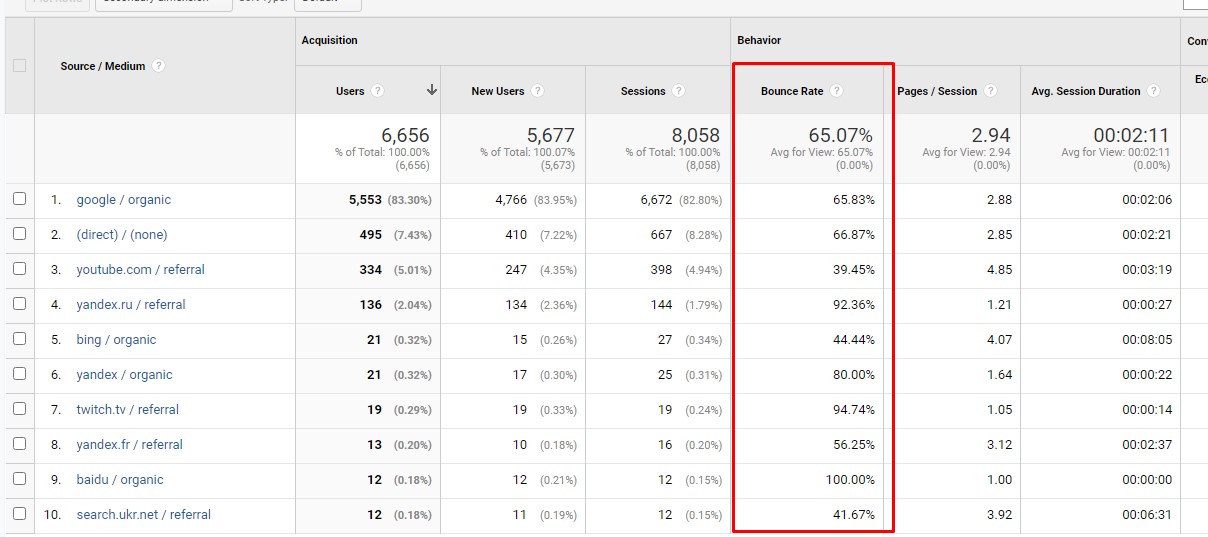
Understanding bounce rate is key to optimizing your website’s success. The “bounce rate” measures the proportion of website visitors that land on a single page but then leave without exploring any further. This is an electronic quickie, just one page long. It can serve as a telltale sign for webmasters about the overall performance of their websites and individual pages.
Consider a local coffee shop’s website. If visitors are landing on the homepage but they’re not exploring the menu or location pages, the site’s bounce rate will be high. These swift exits imply the website isn’t convincing visitors to stick around and dig deeper.
Some factors contributing to bounce rate are:
- Slow page load time – Web surfers are impatient; if your page takes an eternity to load, they’re bound to hit that back button.
- Non-responsive design – A website that doesn’t cater to mobile users might as well have a “Please leave” sign.
- Poor content quality – If your page doesn’t offer valuable, engaging content, don’t expect visitors to stay.
This is this calculation:
750/1000 = 0.75 = 75%; Bounce rate = Bounces / Total Visitors x 100%
Reducing bounce rate means improving these aspects, crafting a website experience that pulls visitors in rather than pushing them away. However, not all bounces are bad – sometimes a user may have simply found exactly what they needed on the landing page itself. Understanding the setting and your target audience is crucial. Ultimately, a low bounce rate typically signals a well-designed, user-friendly, engaging website. Keep your finger on this pulse to ensure your site’s health!
What’s a Good Bounce Rate?
Good bounce rate – sounds straightforward, right? But let’s spill the beans. No universally acceptable figure defines a ‘good’ bounce rate. That’s right – it’s subjective, primarily hinging on the nature of your website, industry, and target audience. Yet, some guidelines can steer you towards understanding what might be a desirable range for your specific site.
In general, a lower bounce rate is often better, implying that visitors are finding your content engaging enough to explore your website further. E-commerce websites typically aim for a bounce rate of 20-40%. Content-heavy sites, like blogs, might consider 40-60% satisfactory. For landing pages designed to convert quickly, even an 80-90% bounce rate might not raise eyebrows.
However, it’s crucial to not blindly chase low bounce rates. Sometimes, a high bounce rate isn’t necessarily bad. If your site provides precise answers that users are seeking right on the landing page, they might bounce off after getting the information – mission accomplished!
Key factors to consider in analyzing your bounce rate are:
- Website Type: Is your site an e-commerce platform, a blog, or a news portal? Each has its own bounce rate benchmarks.
- Content Quality: High-quality, engaging content keeps visitors on your site longer, potentially lowering your bounce rate.
- User Intent: If your website fulfills user queries on the landing page itself, higher bounce rates are normal.
- Page Load Time: Faster-loading pages are less likely to send visitors bouncing off.
Bounce rate is important, but don’t obsess over it. Combining measures like average session time, page views, and conversion rate gives a more realistic picture of your site’s success. Learn about your visitors and utilize that information to improve the website for them. Remember, a ‘good’ bounce rate is one that works well with your overall site goals.
Why you Should Improve your Bounce Rate?

Improving your bounce rate is a clear path to boosting the effectiveness of your website and cultivating an engaged audience. When you succeed in lowering your site’s bounce rate, you create a user-friendly environment that encourages visitors to stay, explore, and interact, rather than vanishing after viewing just one page.
Imagine you’re running an online fitness equipment store. A high bounce rate could mean visitors are landing on your site, glancing at one product page, and immediately bouncing back. Wouldn’t you change that? By focusing on reducing your bounce rate, you’re improving the chances of visitors browsing multiple products, learning more about your brand, and eventually making a purchase. It’s about turning single-page visits into multi-page sessions and potential conversions.
Several benefits come with improving your bounce rate:
- Increased engagement: Visitors browse more pages, consume more content, and interact more with your site.
- Potential sales growth: With more time spent on-site, users are more likely to make purchases.
- Better user experience: A low bounce rate often reflects a well-designed, easily navigable, and user-friendly website.
- Enhanced reputation: Search engines may interpret a lower bounce rate as a signal of a high-quality, relevant website, impacting your site’s visibility.
While improving bounce rate should be on your radar, remember it’s just one metric among many. Focus on enhancing the overall user experience – from quality content to smooth navigation, fast loading speed, and compelling CTAs. Ensure your website doesn’t just attract visitors but also captures their interest and convinces them to stay for a while. The upshot? A healthier bounce rate and a website that truly connects with its audience.
9 Tips to Reduce Bounce Rate on your Website
Upon visiting a single page, users leave it. The situation harms not only the site’s statistics but also the owner’s estimated revenue. Often, the reasons why visitors refuse to continue their journey through the web portal are clear; but there are times when there is no apparent reason for this.
To analyze user behavior and quickly respond to an increase in bounces, we recommend using Plerdy tools. By adding the Plerdy tracking code, the marketer will be able to study the visitor’s actions. Plerdy’s heatmap will help you build hypotheses about the causes of the problem.
The owner of a corporate website or online store wants to minimize the bounce rate as much as possible. Not all methods work.
Here is a list of effective methods to deal with high bounce rates.
Improve user experience
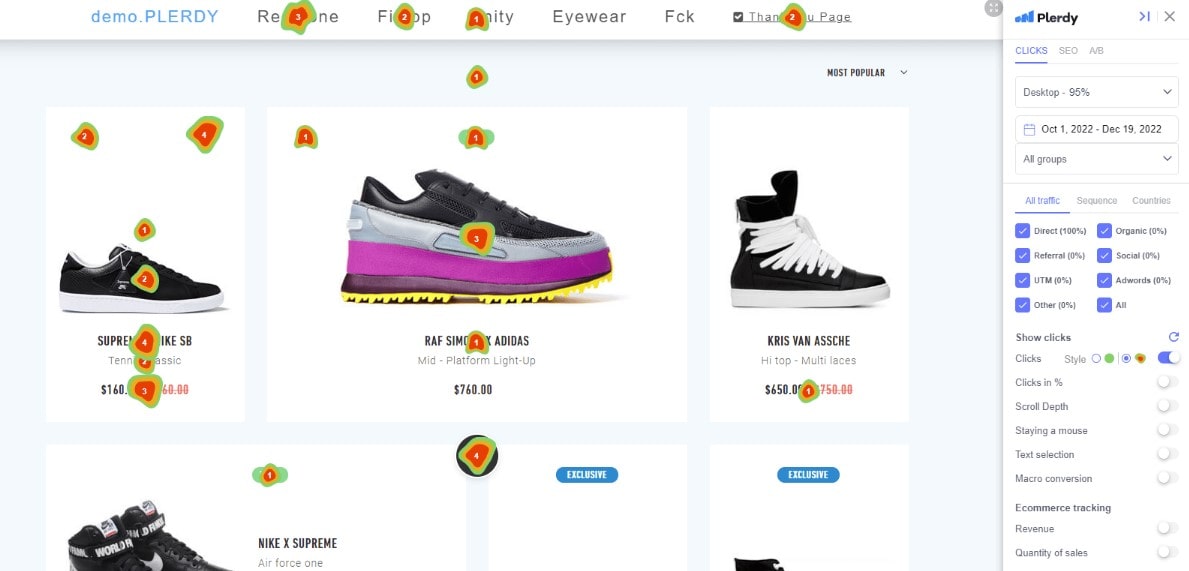
User experience (UX) is a common cause of high bounce rates on a website. User experience is a collection of thoughts, emotions, and impressions that a potential client experiences.
The success of an advertising campaign, the number of orders, micro and macro conversions may depend on this indicator.
UX designers should consider what might be turning off customers to the site. Refusals include:
- color palettes in which the menu font is indistinguishable from background color;
- congested design of the main page;
- too complicated navigation;
- slow loading;
- consistency and intuitiveness of website navigation.
If the site’s structure is not optimized, the user may refuse to work with such a web resource.
To correct the situation, the marketer should:
- determine which pages have a high bounce rate;
- perform an in-depth analysis of site pages based on the click map and recordings of video sessions;
- set tasks for the designer and front-end specialist.
If the bounce rate has decreased, it is necessary to segment all data by traffic channels. After the website transformation, the bounce rate should drop by a few percent.
Optimizing pages and call to action
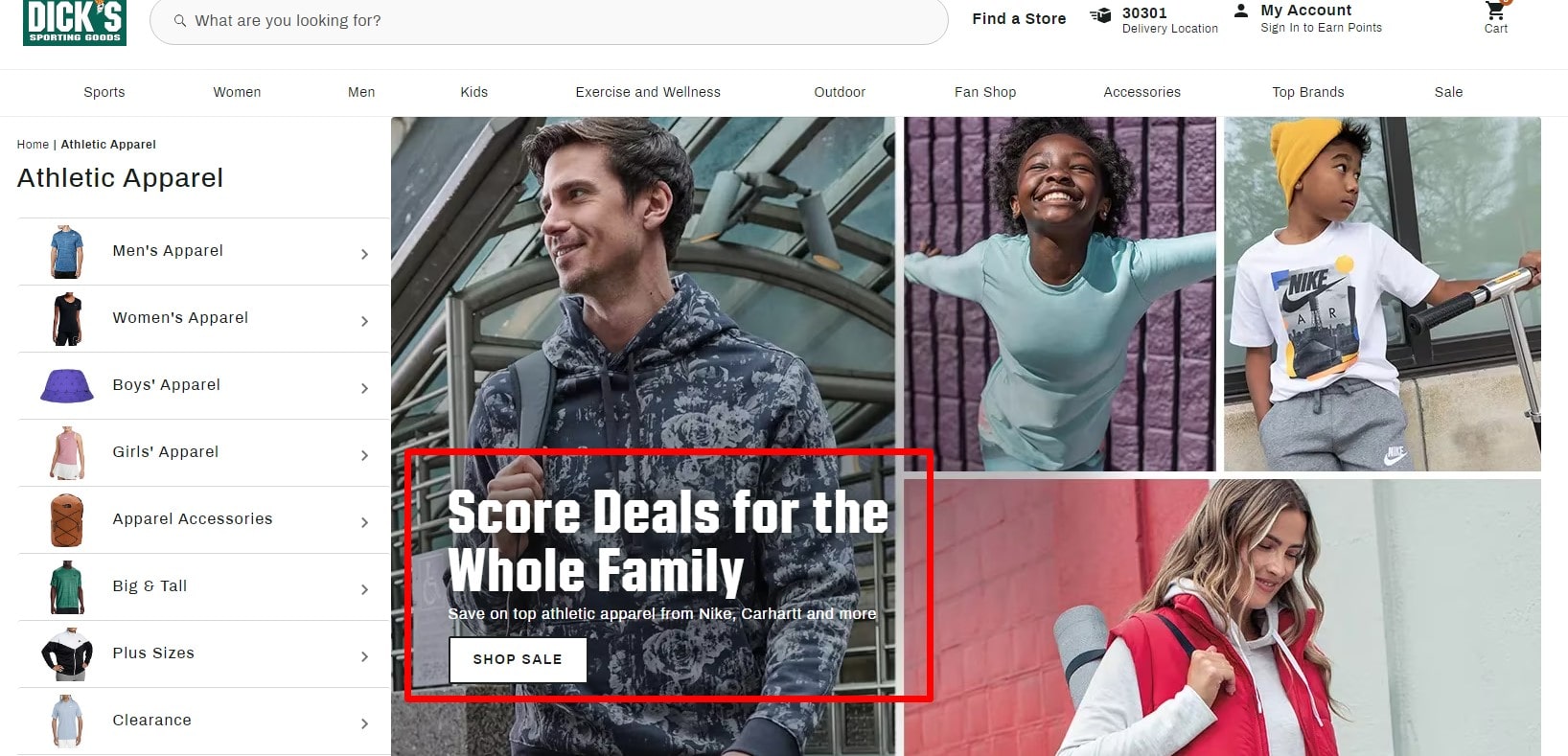
The opinion of a potential client is formed within the first seconds. The first screen of the landing page allows the client to understand what emotions the site evokes quickly. How interested is the client in spending time on it?
Optimizing the non-scrollable part of the page can help marketers increase the chances of further clicks to another page, action, or filter. – but it needs to be styled in addition to the explicit call to action on the landing page. Avoid overloading the page with site links.
Having found the middle ground between informativeness and attracting attention, the website owner reduced the bounce rate.
Conducting A/B Testing

A/B tests evaluate the landing page call to action. If the quality of this call and its effectiveness are too low, this will affect the page’s productivity. Therefore, to reduce the bounce rate on pages with a high percentage of this index, marketers conduct A/B testing. Please note that for effective testing, the site must receive more than 1000 visits per week. Otherwise, data will be insufficient for analysis.
Success Stories as a Tool

some sites use reviews as a promotion tool. Feedback works quite effectively and causes an increase in customer loyalty. However, this method can be improved by making it more interesting – add photos, video, or audio materials instead of a text quote.
Users love success stories. If the company shows that cooperation with it is effective, the number of orders will increase. Bounce rate will also drop.
Each of these methods is extremely useful in working to reduce bounce rates. Using a few tips can increase their overall impact. If all edits are made correctly, the failure rate can be reduced from 10 to 5%. It depends on the website’s subject and nature. The bounce rate will never be zero.
Bounce Rate vs. Drop Off
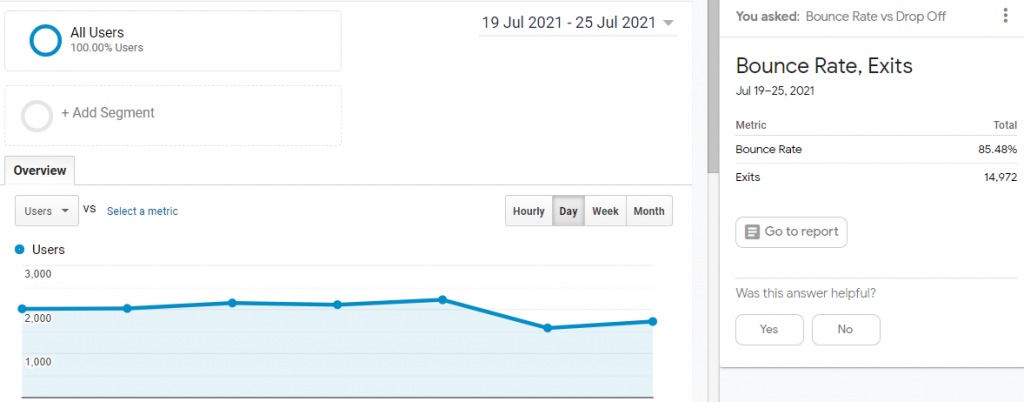
Despite popular belief, bounce rate and exit rate are different concepts.
Google Analytics data task is to illustrate by numerical correspondence the number of site visitors who left the site after visiting only one page.
At the same time, exit rate is the data that helps the website analyst understand which page was the last one visited. The indicator makes it possible to determine why the client did not continue their conversion path and why the offer did not interest them.
These terms are sometimes confused. But upon closer inspection, both are crucial to the site’s success. By distinguishing between these concepts, the analyst of the web page has the opportunity to react to the situation and make exactly the needed changes. Furthermore, the correct interpretation of the indicators determines the understanding of the problem and accelerates its correction.
Importance of Bounce Rate
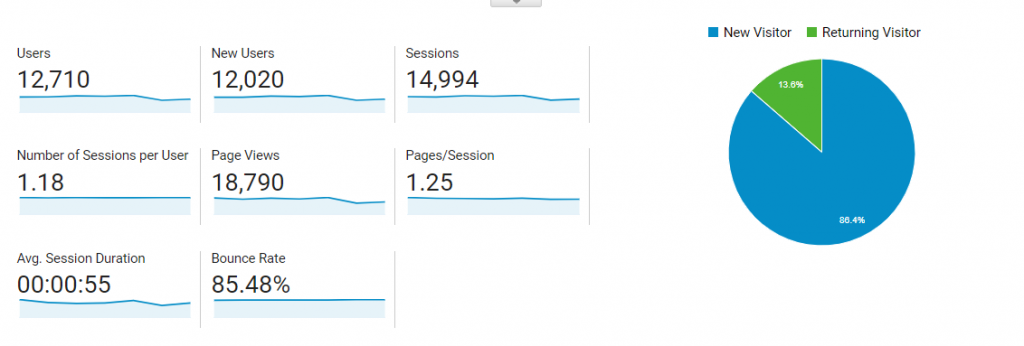
If the bounce rate is too high, the site owner should seriously try to understand the reason. But what does the bounce rate affect? Let’s figure it out.
Many bounces may indicate inaccurate information or a poor-quality call to action. A high bounce rate on a company’s web resource brings certain problems.
If a user’s session duration is negligible, the site owner should consider updating and reorganizing. Often, adding new content, optimizing a page, and increasing its loading speed will pay off.
If the bounce rate has not changed after the upgrade, then the reason lies elsewhere. Usability experts should find UX errors.
Bounce Rate and SEO. Need to know

SEO is the primary marketing channel that brings traffic from the Google search engine to sites worldwide. The bounce rate is the first signal that something is wrong on the website. But is it always the case?
Google ignores this indicator more than it appears.
Matt Cutts – “Google’s former head of Webspam has denied Google’s use of bounce rates in ranking algorithms.”
But considering that:
- Core Web Vitals are the speed metrics of Google’s Page Experience signals used to measure user experience. The metrics measure visual load with Largest Contentful Paint (LCP), visual stability with Cumulative Layout Shift (CLS), and interactivity with First Input Delay (FID).
- Page experience and the included Core Web Vital metrics will officially be used for ranking pages in June 2021.
It can be assumed that the bounce rate takes part in site evaluation as part of the search algorithm. But this theory has several weaknesses.
So, the website’s failures are relative – a high bounce rate can depend on many factors. This statement applies to Google’s Chrome browser.
Lowering the Bounce Rate
Bounce rate is one of the parameters that almost all marketers, SEO/PPC specialists, and website or online store owners strive to improve. Although this rate doesn’t always mean that visitors decided not to contact a manager or support (especially if there is a chat or contact number on the page), it is still a problem for some pages. Sometimes a bounce rate can be as high as over 50%.
We can help if this sounds similar. The Plerdy team wants to demonstrate how popup forms can lower a bounce rate based on two websites. Using the results of our research and analysis, we have completed these case studies.
Case. Lowering the bounce rate on Lemarbet’s website
The first case is based on the use of popup forms by our partners, the website of Lemarbet online agency. The research data covers 13 days (June 07-June 20, 2021).
It was a great time to do some analysis since the website was offering the registration for a webinar. All visitors who stayed on the page for over 10 seconds saw the following banner:
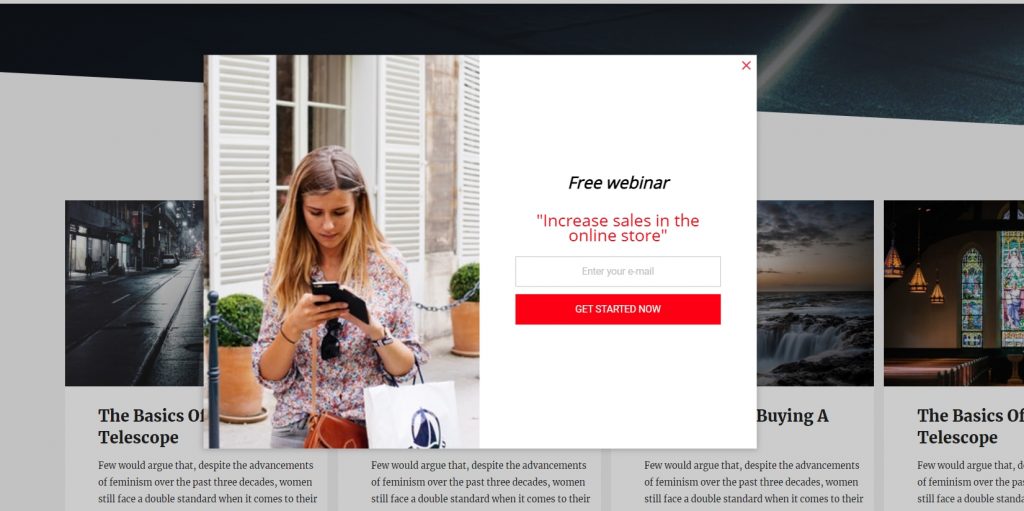
In Plerdy dashboard, the chart of interaction with forms showed the ratio of impressions to closing and sending:

If to take a larger time (March 2 -July 25), you easily notice the period when the bounce rate was decreasing. The overall bounce rate for a nearly month worked out 41.86%:

Compared to the similar previous period, the bounce rate reduced by 14.86%.

Since there were no additional activities or changes on the website. During that period, we could find out that the bounce rate lowered thanks to solely popup forms.
Conclusions
Now, we’ve examined a myriad of strategies that can effectively reduce your website’s bounce rate. Remember the importance of clear, responsive website design, compelling content, and user-friendly features. Use engaging headlines, paragraphs, and call-to-actions to captivate your viewers. Delight your users with a smooth navigation experience from the moment they land on your site to the point they convert.
Don’t let your efforts go unnoticed – keep track of your progress with the Plerdy tool for SEO & UX analysis. It’ll provide you with insightful data, helping you refine your strategy and optimize for a lower bounce rate. With such tools at your disposal, you’ll manage to turn visitors into leads and, eventually, leads into customers. ⚡
Remember, it’s not just about reducing your bounce rate but creating an online space that resonates with your audience and aligns with their needs. Show them you’re here for them, and they’ll trust you. Enhance your website today and see the magic unfold! ?
